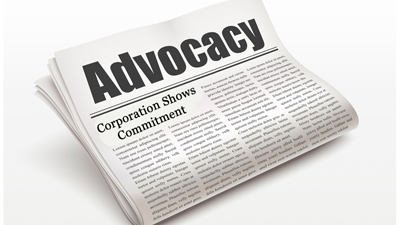Controversy level a significant factor in corporate social advocacy messaging
January 11, 2016 • Jonathan McVerry

Companies share their advocacy activities in many ways. Two common methods are through strategic public relations (editorials) and paid advertising (magazine ads). In a world where the public is inundated with messages from all over, two researchers aimed to find which method was more effective in sharing a company’s advocacy efforts.
What they found was that message success had less to do with the way it was presented and had more to do with the message itself.
Previous research had never examined advertisement vs. editorial effectiveness specifically dealing with corporate social advocacy efforts. Dustin Supa, assistant professor of public relations at Boston University, and co-author Melissa Dodd, assistant professor of advertising and public relations at the University of Central Florida, set out to identify which promotional tactic, if any, worked best. They shared the results in an article (pdf) funded by the Arthur W. Page Center and published last month in a special issue of the PRism journal.
While the researchers found little difference between editorial and advertisement messaging as vehicles, they revealed a key attribute in how audiences view a corporation after experiencing a message promoting its advocacy measures.
“The level of controversy in the message tended to be an important factor on how audiences perceive what the company is trying to say,” Supa said. “We knew that the message vehicle may not be as important as the message itself, but the inclusion of controversial versus non-controversial messaging was an important element.” He said organizations should keep this in mind when communicating corporate social advocacy.
In regards to a controversial topic (i.e. gun control, gay marriage, global warming), Supa said there is a clear indication that pre-existing attitudes are drivers toward engagement with brands and companies.
“People like what they like,” he said. “But if someone doesn’t care about a company or brand, does the involvement or support behind a cause make a difference?”
Using surveys, Supa and Dodd showed more than 550 randomly chosen participants different messaging. The messages in the survey depicted one of two potential scenarios (advertisement or editorial) from one of two organizations. The companies used in the research project were Absolut Vodka and the fictional Valle Air Flow.
“The participants were exposed to organizational messaging surrounding corporate social responsibility (CSR),” Supa said. “We wanted to see if there was a clear indication of pre-existing attitudes in an audience…what are the real drivers toward engagement?”
Companies sometimes advocate for causes not directly related to their mission. (In this case, Absolut Vodka’s commitment to supporting gay rights.) They may gravitate toward causes that leadership finds important, audiences are passionate about or are related to products or services the company provides.
For Absolute Vodka, participants read an editorial and advertisement that showcased the company’s on-going support for same-sex marriage. The editorial was taken from a CBS News article. The advertisement was from 2011. Both were real.
A public relations consultant provided the art and text for the fake advertisement and editorial for Valle Air Flow. Everything was designed to resemble the Absolut Vodka documents, but they primarily discussed the fake company’s commitment to the environment and community.
The researchers searched for potential differences in how consumers viewed corporations who promoted advocacy activities through the two avenues. Specifically, they wanted to know if it affected how consumers saw a corporation’s ethics, viewed the advocacy the company chose to support and whether the consumers were likely to support the company through either word-of-mouth or purchases. Again, the level of controversy drove the participant views, and previously held opinions were significant factors.
Supa added that specifically looking at the level of controversy in a message and its effect on attitudes would be an ideal future research project.
“We hope to start a stream of research surrounding advocacy,” he said. “It would be nice to see research that addresses how corporate social advocacy is a separate dimension of CSR, and how CSR techniques feed into the idea as brands as an advocacy format.”
“The Page Center is a real driver for a lot of this research and we appreciate its support…not only for this project, but the support that led to this study.”
According to its website, PRism is a free-access, online, peer-refereed public relations and communication research journal. It was established in 2002 to meet the need for readily available, quality controlled public relations and communication research materials online.

